
Like puff pastry and Danishes, croissants gain their distinctive flakiness from butter rolled into the dough. A perfectly made croissant shatters into shards of crisp, golden crust when you bite into it, just as puff pastry does, but its interior is rich, yeasty and bread-like. The amount of butter used in the dough varies between bakers, with some leaning toward a lighter, crisper dough, while others favor a rich dough with a higher ratio of butter to flour.
Figuring the Percentages
Professional bakers measure their ingredients by weight, rather than by volume, which provides more accurate and consistent measurements. This makes it easy to express recipes, or formulas, through a system of ratios expressed as a "baker's percentage." Flour is usually the benchmark, and everything else is described by its relationship to the flour's weight. For example, if your recipe contained 10 pounds of flour and 2 pounds of milk, you'd say the milk was at 20 percent of the flour. A formula in percentage format can be easily scaled up or down to any batch size, and the baker can tell at a glance how it compares to the ratios in other recipes.
Bring on the Butter
The bland croissants made at many commercial bakeries can have as little as 15 to 25 percent butter, which makes them profitable but hardly inspiring. The classic French croissant has twice that much, with traditional recipes usually containing 45 to 55 percent butter by weight. In plain language, your flour weighs roughly twice as much as the butter. Deluxe versions of the basic croissant dough can incorporate as much as 75 to 80 percent butter, but they can be difficult for the unwary or inexperienced.
Butter and Dough
Croissants, puff pastry, Danishes and all their kin are referred to collectively as "laminated" doughs, because they're made up of multiple layers, just like a sheet of plywood. They're made from a basic yeast dough, usually created with all-purpose flour or its European equivalents. The dough is first mixed and then rested in the refrigerator, while the butter is kneaded until it reaches a clay-like pliability. Then the dough is wrapped around the butter and sealed, enclosing the fat. The butter and dough should have the same consistency when they're rolled.
Rolling, Rolling, Rolling
To produce the croissant's signature flaky layers, the dough is rolled out first into a large, rectangular sheet. Then it's folded into thirds, like a letter for the envelope, with the edges lined up neatly to make a perfect rectangle, which is referred to by bakers as a "turn." The dough traditionally receives a total of four turns, producing hundreds of layers of wafer-thin dough separated by butter. Croissants are yeast-risen, so they're given time to "proof" or inflate to their full size before being baked. Croissants containing a higher-than-usual ratio of butter to flour must be proofed at lower temperatures; otherwise, the butter tends to melt and run out.
Related Articles

Can You Make Croissants With Baking ...

What Is the Difference Between Puff ...

Is There Gelatin in Donuts?
Is Unbleached Flour the Same as ...

Can You Use Bread Flour Instead of ...

Premium Saltine Crackers Nutrition

What Is the Difference Between a Bagel ...

Can You Substitute Butter for ...

How to Substitute Margarine for Butter ...

What Is Artisan Bread?
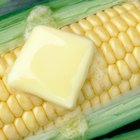
Common Food Emulsifiers

What Additives Are in Flour?

Calories in Fairy Cake
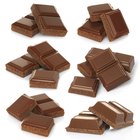
Does Ghiradelli Chocolate Have Gluten?
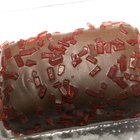
FDA Standards of Chocolate Identity

Alcohol Content: Proof vs. Percentage ...

What Are the Differences Among 24K, 22K ...

Substitute for 1 Square of Baking ...
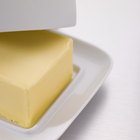
Butter Substitute for Molten Lava Cake
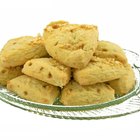
What Is the Difference Between Scones & ...
References
- The Professional Pastry Chef; Bo Friberg
- Weekend Bakery: Classic French Croissant Recipe
- Lallemand Baking: Croissants
- King Arthur Flour: Making Baker's Croissants -- Capturing Butter Heaven
Writer Bio
Fred Decker is a trained chef and prolific freelance writer. In previous careers, he sold insurance and mutual funds, and was a longtime retailer. He was educated at Memorial University of Newfoundland and the Northern Alberta Institute of Technology. His articles have appeared on numerous home and garden sites including GoneOutdoors, TheNest and eHow.
Photo Credits
Goodshoot/Goodshoot/Getty Images